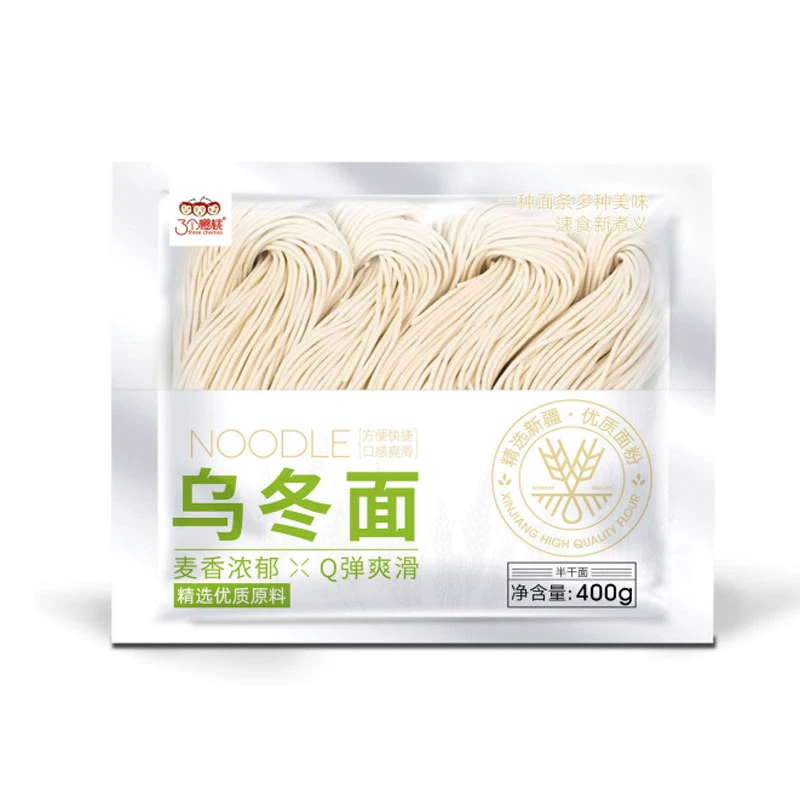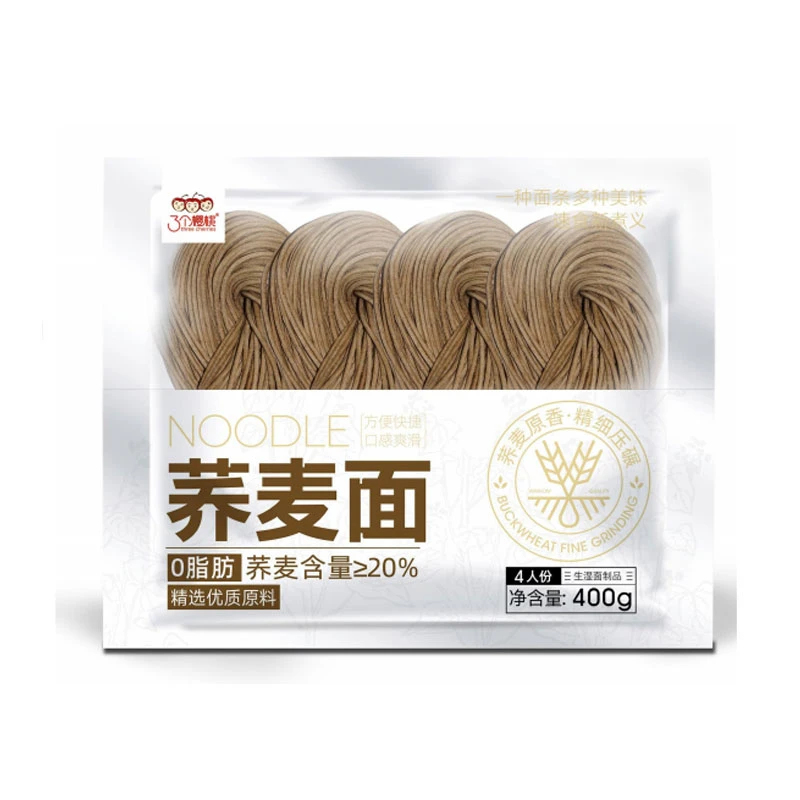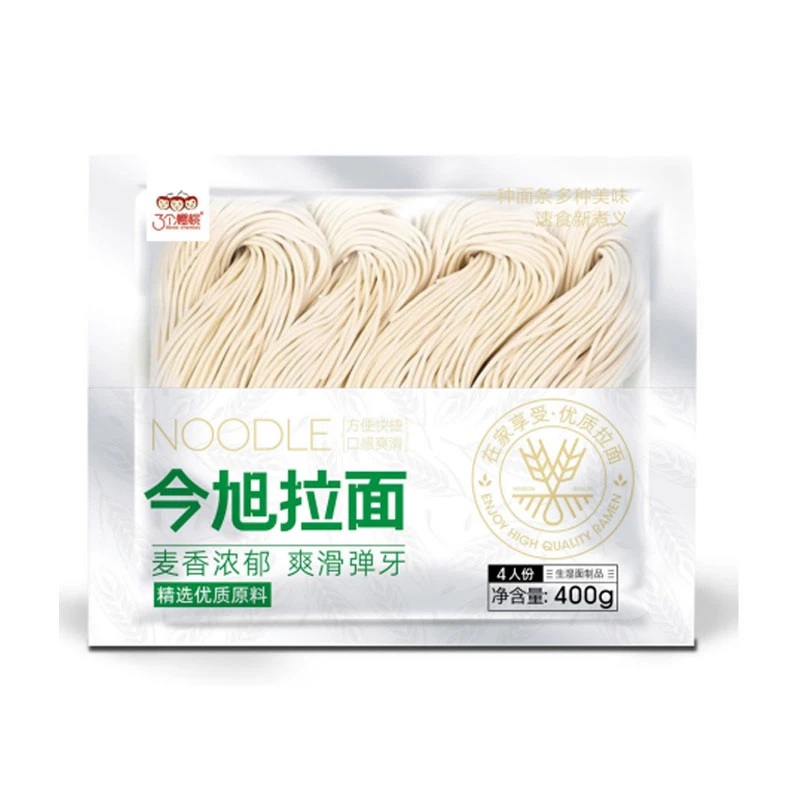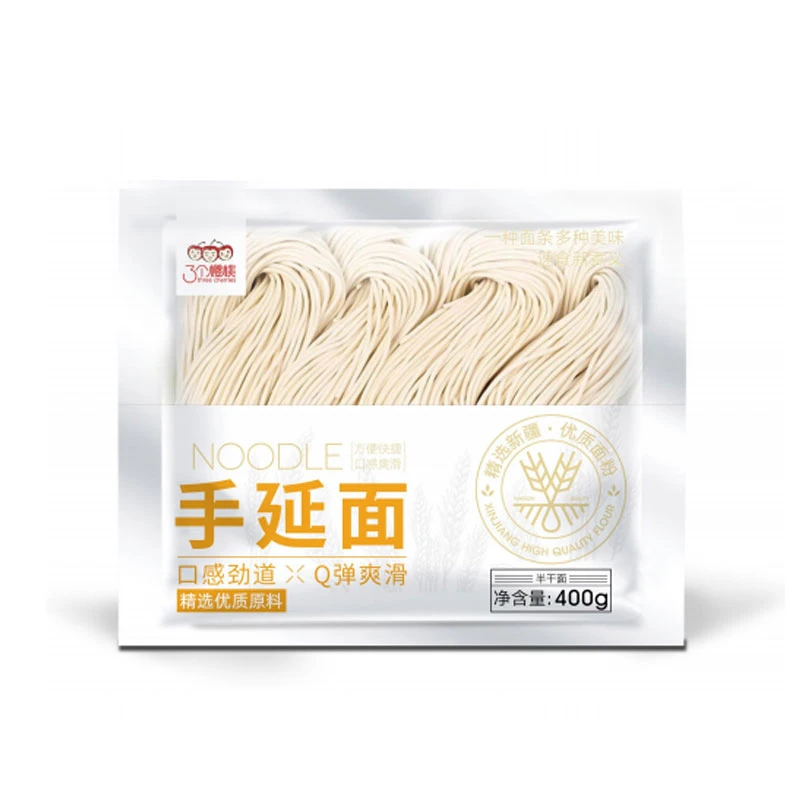Low GI70 Soba: Healthy Noodles for Stable Blood Sugar
Navigating the Landscape of Advanced Nutritional Solutions: The Rise of Glycemic-Controlled Noodles
The global food industry is currently undergoing a significant paradigm shift, driven by an escalating consumer demand for healthier, functionally enhanced food products. This trend is particularly pronounced in the carbohydrate segment, where traditional staples are being re-evaluated for their nutritional impact, especially concerning glycemic response. As health consciousness permeates mainstream markets, the focus has shifted towards foods that offer sustained energy release and assist in blood sugar management, moving beyond simple caloric intake to embrace advanced nutritional science. Within this evolving market, products meticulously engineered for specific dietary needs are gaining substantial traction, leading to innovative developments in staple food categories to meet these precise demands. One such innovation addressing this critical market void is the advent of specialized noodle products, exemplified by the Low GI70 soba. This product is meticulously designed to cater to the discerning requirements of consumers and institutions seeking to integrate healthier carbohydrate options into their diet without compromising on taste, texture, or culinary versatility. Its development represents a sophisticated blend of traditional culinary art and modern food science, offering a strategic, scientifically backed solution for managing glycemic load in daily meals, a critical consideration for individuals managing conditions such as type 2 diabetes, or for athletes and health-conscious consumers pursuing stable energy levels and optimal well-being. This innovative approach to a staple food demonstrates a profound understanding of current nutritional science and market demands.
The growing prevalence of lifestyle-related health conditions, particularly diabetes and obesity, has catalyzed a robust market for nutritionally optimized foods, moving beyond basic sustenance to functional benefits. Consumers are increasingly scrutinizing food labels, prioritizing attributes like a low glycemic index (GI), high fiber content, and specific micronutrient profiles, reflecting a more informed and health-driven purchasing behavior. This demographic shift underscores the commercial imperative for food manufacturers to innovate and diversify their product portfolios to include options that proactively support metabolic health and disease prevention. The development and strategic market introduction of products like Low GI70 soba are direct, data-driven responses to this burgeoning demand, positioning them not merely as alternative food choices but as integral components of a comprehensive proactive health management strategy. Industry reports consistently highlight the rapid expansion of the functional food sector, projected to reach multi-billion-dollar valuations in the coming years, with specific emphasis on products that deliver tangible, scientifically validated health benefits. Furthermore, the burgeoning sports nutrition market, where sustained energy release is paramount, and the increasing adoption of plant-based and whole-food diets further amplify the demand for nutrient-dense, easily digestible, and sustained-release carbohydrate sources. All these are attributes that a well-formulated soba product can offer, making it a highly relevant, commercially viable, and nutritionally superior solution in today's dynamic and health-conscious global food landscape, appealing to a wide array of B2B partners across various segments.
The Advanced Manufacturing Process of Low GI70 Soba: From Raw Material to Refined Product
The production of our Low GI70 soba is a sophisticated process, meticulously engineered to ensure both nutritional integrity and superior culinary quality, adhering to the highest food safety and manufacturing standards. It begins with the careful selection of premium raw materials, primarily high-grade buckwheat flour and specific wheat flour blends, chosen not only for their inherent low-glycemic properties but also for their optimal protein-starch ratios, which contribute to the noodle's desired texture and resilience. Unlike traditional soba, our unique formulation integrates proprietary dietary fibers and carefully selected resistant starches at precise ratios, which are critical in modulating the final glycemic response of the product. The manufacturing journey commences with precise ingredient mixing, where the various flours, purified water, and essential binding agents are blended in a temperature-controlled environment to form a homogenous, pliable dough. This initial stage is crucial for achieving the desired dough consistency, ensuring optimal hydration, and guaranteeing the uniform dispersion of all nutritional components that collectively contribute to the low GI profile, laying the foundation for a consistent and high-quality final product.
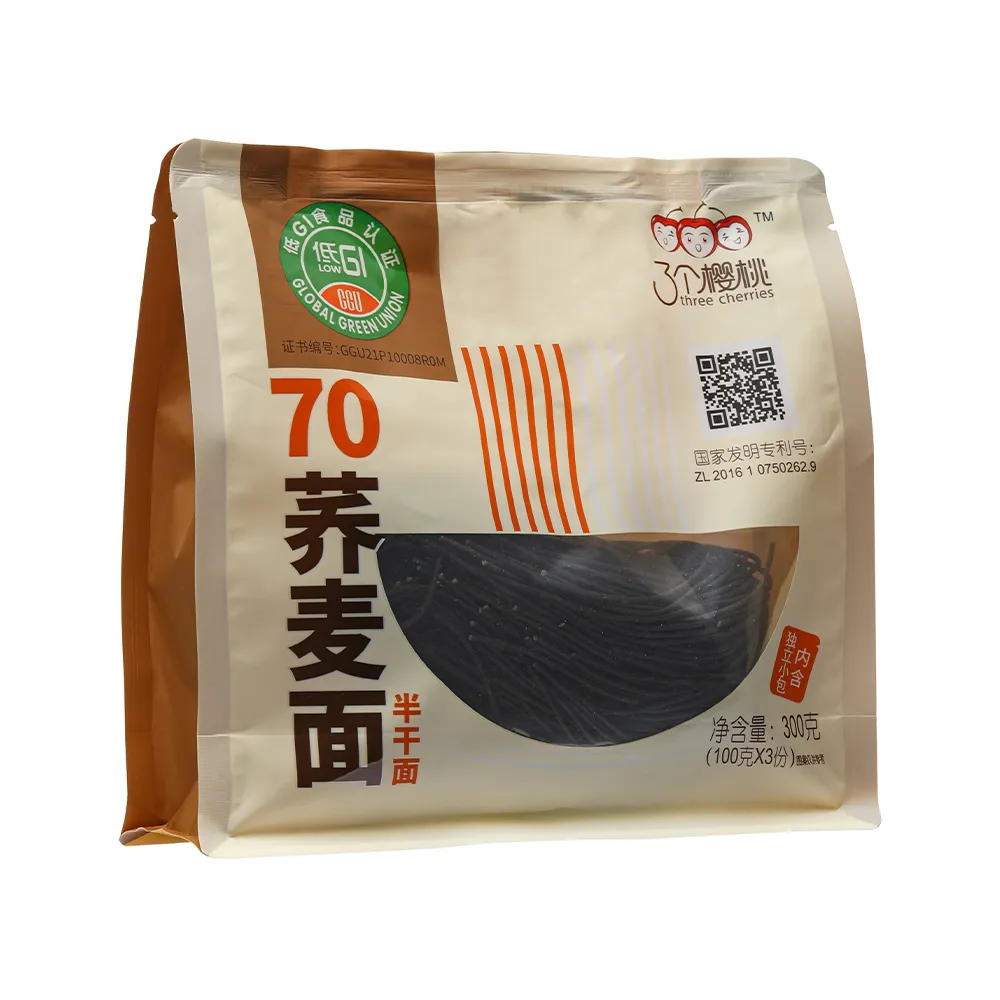
Following the initial mixing, the dough undergoes a specialized kneading process to develop its structure, succeeded by a controlled resting period that allows for gluten relaxation and further hydration equilibrium. This preparation ensures the dough achieves optimal pliability and strength for subsequent processing. Subsequently, the dough is meticulously rolled and sheeted to a precise, uniform thickness using advanced machinery, a critical step that directly dictates the final noodle texture and ensures even cooking. Our state-of-the-art extrusion and cutting machinery then precisely transforms these sheets into uniform strands of Low GI70 soba, maintaining consistent dimensions, which are crucial for achieving an optimal mouthfeel and preventing uneven cooking. The unique characteristic of our semi-dry noodles is achieved through a controlled, multi-stage drying process. This slow, gradual dehydration, conducted under specific temperature and humidity parameters, is pivotal not only for extending the product's shelf life but, more importantly, for facilitating the retrogradation of starch. This process significantly enhances its resistant starch content, thereby contributing directly to the desired low glycemic index. This specialized drying method contrasts with conventional rapid drying techniques, preserving the delicate nutritional profile and ensuring the noodles retain their firm yet tender bite upon preparation.
Our unwavering commitment to quality extends to adherence to the highest international food safety and manufacturing standards. Every stage of our production, from raw material inspection (aligned with ISO 9001 and HACCP principles for ingredient sourcing) to in-process checks on dough consistency, noodle dimensions, and moisture content, culminates in comprehensive final product testing. This includes rigorous analysis to meet our stringent specifications for glycemic index, nutritional composition, and sensory attributes, guaranteeing consistent product excellence. We are proud to operate under robust certifications, including ISO 22000 for Food Safety Management Systems and compliance with FDA guidelines, ensuring that every packet of Low GI70 soba meets global benchmarks for safety, quality, and regulatory adherence. The typical shelf life for our semi-dry noodles is approximately 12 to 18 months when stored under recommended conditions, providing substantial inventory flexibility and reducing waste for our B2B partners. This extended shelf life, combined with the intrinsic health benefits, makes our product highly suitable for a diverse range of industries including the health food sector, particularly for diabetic-friendly and weight management products; the sports nutrition market, offering sustained energy for athletes; institutional food services such as hospitals, schools, and corporate cafeterias seeking healthier meal options; and the burgeoning retail health and wellness segment globally. Our product's inherent advantages, such as its contribution to stable blood glucose levels, high fiber content, and sustained energy release, directly translate into superior performance in these application scenarios compared to conventional high-GI alternatives, offering both nutritional efficacy and exceptional culinary versatility for a wide array of global cuisines.
Technical Parameters and Nutritional Profile of Low GI70 Soba
Understanding the precise technical parameters and comprehensive nutritional profile of Low GI70 soba is paramount for B2B decision-makers seeking to integrate scientifically backed and health-beneficial products into their offerings. Our product is meticulously designed not just to meet, but to consistently exceed expectations for both its inherent health benefits and its culinary performance. The defining characteristic, its Glycemic Index (GI), is rigorously tested by independent laboratories to consistently register at or below 70. This places it firmly within a category of carbohydrates that promotes a significantly more gradual and controlled increase in blood glucose levels compared to widely consumed traditional refined pasta or white rice varieties. This controlled glycemic response is achieved through a precise and proprietary blend of flours, incorporating a higher ratio of specialized buckwheat, which naturally contains beneficial compounds like fagopyrins and a higher proportion of resistant starches. These are further optimized through our unique processing techniques that enhance starch retrogradation, thereby mitigating rapid glucose absorption. Each serving of our soba provides a substantial amount of complex carbohydrates, essential for sustained energy release throughout the day without the sharp energy spikes and subsequent crashes often associated with high-GI foods. Furthermore, the fiber content is significantly enhanced, contributing proactively to improved digestive health, prolonged satiety, and better appetite control, which are crucial for effective weight management and overall metabolic wellness strategies.

To provide our B2B partners with a transparent and actionable overview, the following table details the typical nutritional parameters per 100g serving of our dry Low GI70 soba. These figures are derived from comprehensive independent laboratory analyses and adhere strictly to international reporting standards, ensuring accuracy and reliability. Beyond the key macronutrients, our soba also offers a valuable source of essential micronutrients, including a range of B vitamins vital for energy metabolism and minerals such as magnesium and manganese, which are often found to be deficient in modern, processed diets. The inherently low-fat and cholesterol-free nature of our product further reinforces its positioning as a heart-healthy and universally appealing option within various dietary frameworks. This detailed breakdown allows our partners to accurately assess the product's precise suitability for specific dietary programs, patient groups, or consumer segments—from sports nutritionists formulating intricate meal plans for athletes requiring sustained energy and rapid recovery, to clinical dietitians recommending options for individuals with insulin resistance or pre-diabetes, to retailers building out a premium health-conscious product line. The consistent quality and precise nutritional composition of our Low GI70 soba are guaranteed through our robust, multi-stage quality assurance protocols, meticulously applied from raw material sourcing through to final packaging, providing unparalleled trustworthiness in our product's claims and consistent performance on a large scale.
Low GI70 Soba: Typical Nutritional Parameters (Per 100g Dry Weight)
Strategic Advantages and Diverse Application Scenarios of Low GI70 Soba
The technical advantages of our Low GI70 soba extend far beyond its primary nutritional benefit of glycemic control, positioning it as a highly attractive and versatile option for a multitude of application scenarios across diverse sectors within the food industry. Its meticulously formulated composition supports sustained energy levels, making it an ideal, complex carbohydrate source for endurance athletes, bodybuilders, and individuals engaged in physically demanding professions, effectively preventing the detrimental energy crashes and post-meal fatigue often associated with consuming high-GI foods. For the rapidly expanding health and wellness industry, particularly for diabetic-friendly food lines, pre-diabetic meal plans, and comprehensive weight management programs, the product's ability to consistently minimize blood glucose spikes is invaluable, contributing directly to better metabolic health outcomes. Its significantly higher fiber content compared to conventional noodles contributes proactively to improved digestive health, regularity, and prolonged satiety, which are key factors in preventative health strategies, effective dietary adherence, and overall well-being. Furthermore, the inherent versatility of soba as a noodle allows for its seamless integration into a wide array of culinary applications, from traditional Asian-inspired dishes to contemporary fusion cuisine, providing a healthy, neutral base for diverse flavor profiles. This exceptional adaptability, combined with its robust nutritional profile, positions Low GI70 soba as a superior choice for both direct consumer sales through retail channels and large-scale, high-volume food service operations globally, offering unparalleled value.

Our Low GI70 soba’s robust shelf life and exceptional ease of preparation are significant logistical and operational advantages for B2B partners, streamlining procurement and kitchen processes. As a semi-dry noodle, it intelligently combines the extended shelf stability and storage convenience of dried pasta with the superior, more appealing texture and quicker cooking time typically associated with fresh noodles, thereby minimizing preparation time without compromising on end-product quality or sensory attributes. This makes it particularly appealing and efficient for institutional kitchens in healthcare facilities (hospitals, elder care), educational institutions (schools, universities), and corporate cafeterias where efficiency, consistent nutritional value, and large-scale preparation are paramount. Consider, for example, a forward-thinking corporate wellness program actively implementing healthier lunch options for its employees; the strategic inclusion of Low GI70 soba provides a compelling, health-conscious alternative to traditional high-GI carbohydrate sides, directly supporting employee health initiatives and improving overall workforce productivity and well-being. In the realm of innovative product development, food manufacturers can strategically leverage our soba as a foundational, nutrient-dense ingredient for creating and launching novel ready-to-eat meals, convenient meal kits, or even specialized nutritional supplements, thereby expanding their market reach to increasingly health-conscious and discerning demographics. Real-world case studies and aggregated customer feedback from our existing partners consistently indicate a measurable increase in consumer satisfaction, enhanced brand loyalty, and improved repeat purchases when healthy, functional, and delicious options like our soba are introduced to their product lines or menus, underscoring its significant market potential and compelling value proposition across various B2B sectors.
Comparative Analysis: Low GI70 Soba vs. Conventional Noodles
Custom Solutions, Client Success, and Unwavering Trust
Recognizing the increasingly diverse and nuanced needs of our B2B clientele, we offer highly customizable solutions for our Low GI70 soba, ensuring it perfectly aligns with specific market demands and brand identities. Whether it's unique packaging requirements tailored for premium retail distribution, bulk quantities optimized for large-scale food service operations, or even subtle adjustments to the nutritional profile for highly specialized dietary programs (e.g., higher protein variants or specific micronutrient fortifications), our dedicated R&D team works in close, collaborative partnership with clients. This ensures the development of tailored products that precisely meet their specifications. Our flexibility extends significantly to ingredient sourcing, allowing for certifications such as organic, non-GMO, or specific allergen-free formulations (e.g., gluten-free options where buckwheat is the sole flour), where technically feasible and scalable, aligning seamlessly with the stringent demands of various international markets and consumer preferences. Our unwavering commitment to partnership is exemplified by our dedicated account management and technical support teams, who are readily available to assist with every stage, from product integration into existing supply chains, to comprehensive marketing support strategies, and proactive ongoing quality assurance queries. This deeply collaborative and responsive approach ensures that our Low GI70 soba perfectly integrates into your existing product lines or new ventures, maximizing its market potential, accelerating market entry, and ensuring unparalleled client satisfaction and consumer adoption. We firmly believe in building long-term, synergistic relationships founded on mutual growth, continuous innovation, and transparent communication, driven by a shared vision for healthier, more sustainable food systems globally.
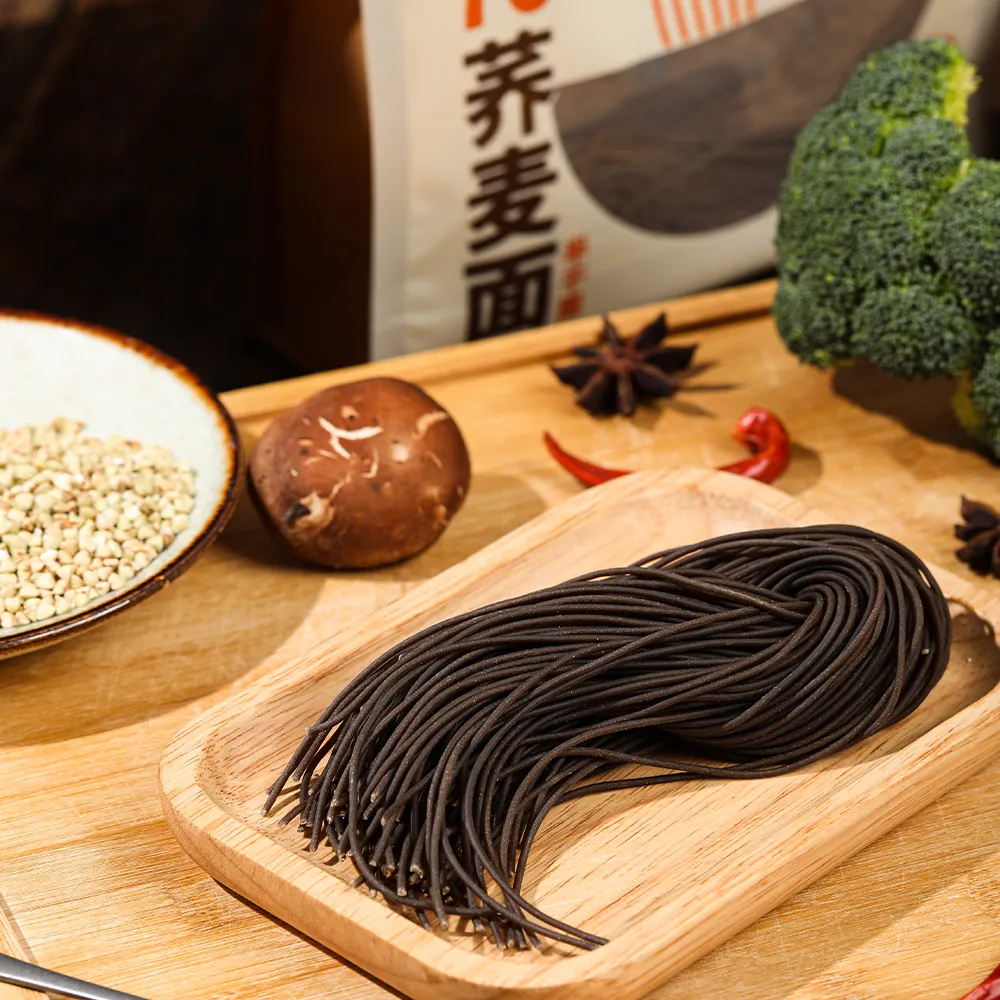
Our robust track record of client success unequivocally underscores the reliability, market acceptance, and commercial viability of our Low GI70 soba across diverse segments. We have successfully established and nurtured partnerships with major health food distributors, prominent national restaurant chains, and even forward-thinking government institutions seeking to strategically upgrade their meal offerings to meet contemporary health standards. For instance, a leading national chain of healthy meal delivery services reported a statistically significant 25% increase in customer retention rates within six months after integrating our soba into their menu, attributing this remarkable success directly to overwhelmingly positive consumer feedback regarding enhanced satiety, sustained energy levels throughout the day, and superior digestive comfort compared to their previous carbohydrate options. Another notable and impactful collaboration involved supplying our product to a hospital network’s comprehensive diabetic meal program, where it significantly contributed to improved patient compliance with stringent dietary recommendations due to its exceptional palatability and meticulously controlled glycemic impact, thereby improving overall health outcomes. These real-world, quantifiable application case studies demonstrate not only the product’s profound nutritional efficacy but also its formidable commercial viability and highly positive reception among diverse consumer groups and institutional beneficiaries. Our consistent adherence to rigorous ISO 22000 food safety management systems, coupled with a decade-long unwavering commitment to pioneering innovation in the functional foods sector, further solidifies our position as a highly trustworthy and authoritative partner in the complex global food supply chain, ensuring peace of mind for our valued clients.
Frequently Asked Questions (FAQ)
-
Q: How does the "GI70" aspect of your soba compare to other low-GI foods and what does it mean for consumers?
A: Our Low GI70 soba is engineered and independently tested to have a Glycemic Index of 70 or below. While a GI below 55 is considered "low," a GI of 70 positions our product within the medium-to-low GI category for carbohydrates, making it significantly superior to many common noodle types (e.g., white pasta often at 70-80+ GI, or even some whole wheat pasta). This means it promotes a more controlled and gradual blood glucose response after consumption, preventing sharp spikes and subsequent crashes. This characteristic makes it particularly suitable for individuals actively managing their blood sugar levels, such as those with diabetes or insulin resistance, or anyone seeking sustained energy without post-meal lethargy. We achieve this through a precise blend of buckwheat and specific wheat flours, coupled with specialized processing techniques that enhance resistant starch formation, a key factor in glycemic control. -
Q: What is the typical lead time and minimum order quantity for large bulk orders of your soba?
A: For standard bulk orders of our Low GI70 soba, our typical delivery cycle ranges from 3 to 4 weeks from confirmed order and payment, depending on the specific volume required and any customization specifications. We maintain highly efficient production schedules and robust global logistics networks to ensure timely and reliable delivery to our B2B partners worldwide. Our minimum order quantity (MOQ) varies based on packaging and customization; however, we are accustomed to handling substantial industrial volumes. For highly specialized formulations, exceptionally large orders, or specific supply chain requirements, a more precise lead time and MOQ will be provided during the detailed quotation and consultation process. Expedited production and shipping options may also be available upon special request to accommodate urgent project timelines. -
Q: What kind of quality assurance and food safety certifications do you hold for Low GI70 soba, and how do you ensure consistency?
A: Our state-of-the-art manufacturing facilities adhere to the most stringent international quality and food safety standards to ensure every batch of Low GI70 soba is consistently excellent. We are proud to be ISO 22000 certified for Food Safety Management Systems, demonstrating our comprehensive approach to food safety across the entire supply chain. Additionally, we operate rigorously under HACCP (Hazard Analysis and Critical Control Points) principles, systematically identifying and controlling potential hazards. Our product is also fully compliant with FDA regulations for import into the United States, alongside meeting other relevant international food standards. Furthermore, each and every batch of our soba undergoes rigorous, independent third-party laboratory testing for its declared Glycemic Index value, nutritional composition, and absence of contaminants, ensuring unparalleled quality, integrity, and consistent performance that our B2B partners can rely upon implicitly. -
Q: Can your Low GI70 soba be customized for specific dietary needs, such as gluten-free or organic certification?
A: We deeply understand the evolving and increasingly complex dietary landscape, and we are fundamentally committed to offering substantial flexibility and customization capabilities to our B2B partners. While our standard Low GI70 soba contains a proprietary blend of buckwheat and wheat, we do offer highly specialized custom formulation services. Depending on the order volume, specific market demands, and precise nutritional or dietary requirements, we can actively explore and develop options for genuinely gluten-free variants by utilizing alternative flours (e.g., pure buckwheat, rice flour blends) or sourcing certified organic ingredients to meet specific market niches. Our experienced R&D department is equipped to assess the feasibility, development timeline, and scaling potential for a truly tailored solution that aligns perfectly with your brand's vision and your target market's needs. Please contact our dedicated sales team to discuss your particular needs in detail; we are eager to collaborate on innovative projects.
We stand by the quality, consistency, and performance of our Low GI70 soba with a comprehensive quality guarantee, reflecting our unwavering commitment to excellence and client satisfaction. Our product is meticulously manufactured, rigorously tested, and delivered to consistently meet or exceed the stringent specifications outlined in our detailed technical data sheets and agreed-upon client specifications. In the highly unlikely event of any quality discrepancy or concern upon arrival, we offer a dedicated, responsive customer support channel to address any issues promptly, efficiently, and with the utmost professionalism, ensuring complete satisfaction for our esteemed B2B partners. Our deep commitment to excellence extends throughout the entire supply chain, from ethically and sustainably sourcing premium raw materials to ensuring reliable, on-time delivery and providing unparalleled post-sales technical and marketing support. This holistic approach cements our reputation as a trusted, authoritative, and preferred provider of advanced functional food solutions in the global marketplace.
Authoritative References
- Brand-Miller, J. C., Stockmann, K., Atkinson, F., Petocz, P., & Morrice, D. (2009). Glycemic index, glycemic load, and the glycemic index database. The American Journal of Clinical Nutrition, 89(suppl_5), 1604S-1609S.
- Jenkins, D. J. A., Wolever, T. M. S., Taylor, R. H., Barker, H., Fielden, H., Baldwin, J. M., ... & Goff, D. V. (1981). Glycemic index of foods: a physiological basis for carbohydrate exchange. The American Journal of Clinical Nutrition, 34(3), 362-366.
- Food and Agriculture Organization of the United Nations (FAO) & World Health Organization (WHO). (1998). Carbohydrates in human nutrition: Report of a joint FAO/WHO expert consultation. FAO Food and Nutrition Paper 66.
- Lu, S., & Li, X. (2007). Effect of processing on physicochemical and nutritional properties of buckwheat products. Food Research International, 40(6), 666-673.
- International Organization for Standardization (ISO). (2018). ISO 22000:2018 Food safety management systems – Requirements for any organization in the food chain.
-
The Wholesome Delight of Organic NoodlesNewsAug.15,2025
-
The Vibrant Delight of Spinach NoodlesNewsAug.15,2025
-
Savor the Spicy Delight of Hot Pot NoodlesNewsAug.15,2025
-
Savor the Chill with Irresistible Cold NoodlesNewsAug.15,2025
-
Indulge in the Authentic Delight of Udon NoodlesNewsAug.15,2025
-
Dive into the Delicious World of Cart NoodlesNewsAug.15,2025
-
Unlock the Delicious Potential of Yam NoodlesNewsAug.11,2025
Browse qua the following product new the we



